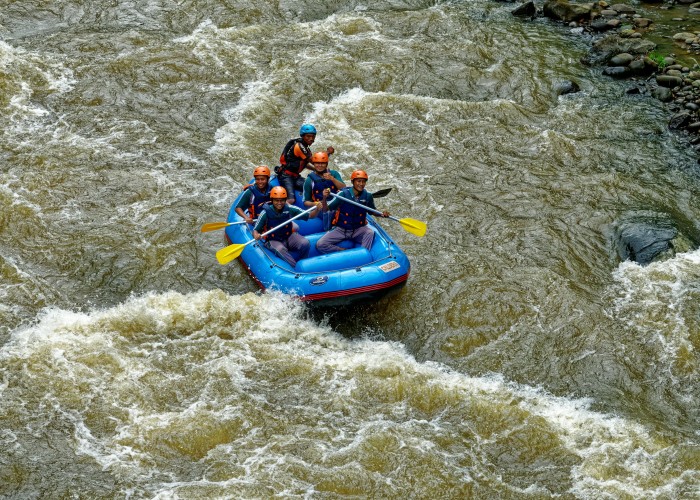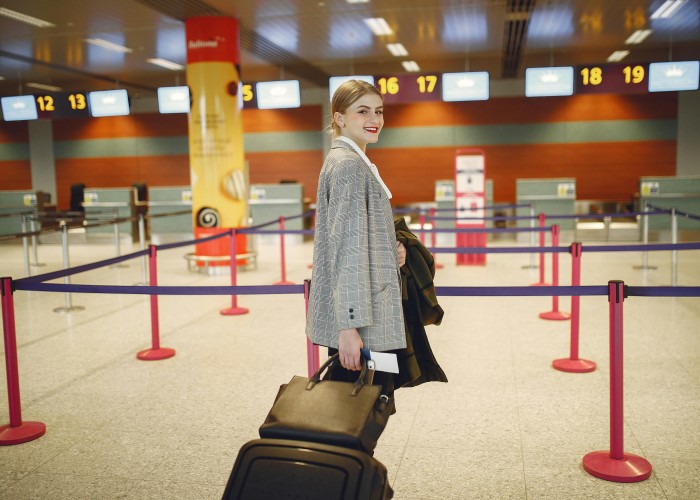Rishikesh, nestled in the foothills of the Himalayas along the Ganges River, is one of India’s premier adventure tourism destinations. Among the thrilling activities it offers, white water rafting stands out as an exhilarating experience for travelers seeking adventure, scenic beauty, and a touch of adrenaline. White Water Rafting in Rishikesh.
This guide is crafted for global travelers, especially from the USA, UK, Australia, and Germany, providing detailed information for planning a safe, enjoyable, and unforgettable rafting adventure in Rishikesh.
Overview: What is White Water Rafting and Why Rishikesh is Famous
White water rafting is an outdoor adventure activity where participants navigate a river in inflatable rafts, overcoming rapids and enjoying scenic landscapes along the way.
Rishikesh is famous for rafting due to:
- Variety of Rapids: From gentle Grade I-II rapids for beginners to challenging Grade III-IV rapids for experienced rafters
- Scenic Beauty: Surrounded by lush green hills, waterfalls, and forested landscapes
- Accessibility: Easily reachable from major cities like Delhi and Dehradun
- Adventure Culture: Multiple adventure camps and well-regulated rafting services
Rafting in Rishikesh combines adventure with natural beauty, making it a must-try activity for thrill-seekers and nature lovers alike.
Best Time to Visit
Timing your visit ensures safe and enjoyable rafting experiences:
- October to March: Cool, dry, and pleasant weather; water levels are lower but rafting is still possible on certain stretches
- April to June: Ideal time; warm weather and moderate water flow make it perfect for all skill levels
- July to September: Monsoon season; high water flow can make rafting risky, and some stretches may be closed for safety
Early morning or late afternoon sessions are recommended for calmer water and scenic views.
How to Reach Rishikesh for White Water Rafting
Rishikesh is well-connected by air, rail, and road, making it accessible for international and domestic travelers.
By Air
- Nearest Airport: Dehradun’s Jolly Grant Airport, approximately 20 km from Rishikesh
- Domestic and international flights connect major cities in the USA, UK, Australia, and Europe
- From the airport, taxis or buses can take travelers directly to rafting camps
By Train
- Rishikesh Railway Station is well-connected to major Indian cities
- From the station, local transport options like taxis, auto-rickshaws, and buses are available
By Road
- National highways connect Rishikesh with Delhi (approximately 240 km) and Haridwar (25 km)
- Private cabs, buses, and self-driving options are popular for travelers seeking flexibility
Entry Fees and Permits
Rafting experiences are usually organized by licensed operators; fees vary based on distance, duration, and services included:
- Short Trips (8–10 km): Approximately USD 15–25 per person (subject to change)
- Longer Trips (15–20 km): Approximately USD 25–40 per person
- Permits: Most operators handle permits; travelers generally do not need to arrange them individually
Extra costs may include river photography, video packages, or transport to launch points.
Food Availability and Meal Options
While rafting itself is a half-day or full-day activity, food availability depends on location:
- Adventure Camps: Many provide breakfast, snacks, and lunch packages for full-day trips
- Nearby Restaurants: Cafes and dhabas serve local North Indian meals including vegetarian options
- Tips: Carry water bottles, energy bars, or dry snacks for long rafting stretches
Eating light before rafting is recommended to avoid discomfort during rapids. White Water Rafting in Rishikesh.
Packing List and Essentials
For a safe and comfortable rafting experience, pack:
- Quick-dry or swimwear clothing
- Lightweight, comfortable footwear (water shoes or sandals)
- Sunscreen and sunglasses with a strap
- Waterproof bag for essentials
- Personal medications and first-aid items
- Towel and change of clothes for post-rafting
- Helmet and life jacket (usually provided by operators)
Avoid carrying valuables unless secured in waterproof pouches.
Safety Tips and Local Regulations
Safety is crucial for an enjoyable rafting experience:
- Always follow instructions from trained guides
- Wear life jackets and helmets at all times
- Avoid rafting under the influence of alcohol or drugs
- Do not attempt risky maneuvers in fast-flowing sections without guidance
- Stay hydrated and avoid overexertion
- Operators must comply with local safety regulations and emergency protocols
Tips for Beginners or First-Time Visitors
- Start with easier stretches with Grade I-II rapids before attempting higher grades
- Book with certified operators for professional guidance and safety equipment
- Arrive early to complete registration, safety briefings, and practice sessions
- Take note of hand signals and safety instructions provided by guides
- Enjoy the scenery and don’t rush; paddling is part of the adventure
Local Customs and Cultural Etiquette
Understanding local customs enhances your experience:
- Respect riverside communities and avoid littering
- Dress modestly when not in rafting gear, particularly near temples and local villages
- Photography is allowed, but avoid capturing locals without permission
- Interact politely with guides and fellow participants
- Follow eco-friendly practices to protect river ecosystems
FAQs: White Water Rafting in Rishikesh
Q1: How long does a typical rafting session last?
A1: Sessions range from 2 to 6 hours depending on river stretch and package type.
Q2: What is the difficulty level of rapids?
A2: Rapids range from Grade I-II (easy) to Grade III-IV (moderate to advanced). Beginners should start with easy stretches.
Q3: Are there age restrictions for rafting?
A3: Most operators allow children above 10 years and healthy adults; check operator guidelines for safety.
Q4: Is swimming required to participate?
A4: No, life jackets are mandatory and help keep non-swimmers safe.
Q5: Are restrooms available during rafting trips?
A5: Basic facilities are available at rafting camps and launch points.
Q6: Can I carry a camera or phone?
A6: Waterproof pouches are recommended; some operators also provide action cameras.
Q7: Is white water rafting safe?
A7: Yes, with certified guides, safety equipment, and adherence to local regulations. White Water Rafting in Rishikesh.
Q8: Do I need to book in advance?
A8: Booking in advance is recommended, especially during peak tourist seasons from October to March.
Final Thoughts
White water rafting in Rishikesh offers a perfect combination of adventure, scenic beauty, and fun. From navigating rapids to floating past forests and hills, it’s an experience that brings thrill and natural wonder together. White Water Rafting in Rishikesh.






Leave a Reply